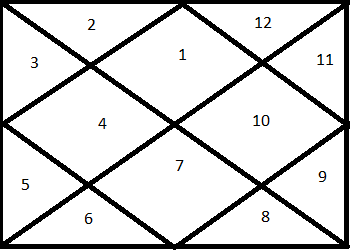Science in Indian Culture – Gudhi Padwa
Many Indian traditions and customs have some science, reasoning and history behind it. Even though we follow our traditions, we have lost the context of some of our traditions. Being an intelligent culture, we may stop following our customs and traditions unless we know the science or reasoning behind it. Indian culture was totally based on the scientific knowledge known at that point of time. It has also evolved over the period of time. There may be other cultures that also have some scientific basis and it will be very interesting to learn about them. If you know any such scientific custom in any culture please add your comments to this blog post.
Few days back, I
published blog named ‘Indian
concept of time’ that explains the 60 year lunar cycle and also when a year
begins for Indians. Hindu year always begins between 15th of March and
15th of April. Interesting enough, many cultures inside as well as outside
India, start New Year in
March or April. The most natural reason behind this is because Sun enters into
Aries during this time and Aries is considered to be first sign of the zodiac. Sun
enters into Aries on March 21st based on ‘Sayana’ system or April 15th
based on ‘Nirayana’ system. In the past, even in Europe, New Year used to start on 25th
March or 6th April.
You will find
good information about cultural context of Gudhi Padwa here and what I am planning
to do is to add scientific context to Gudhi Padwa. You may be aware about
various plants and flowers used to decorate the Gudhi. Mainly Neem leaves and marigold flowers are used on Gudi Padwa and I intend to explain the use of both the plants.
Let's first look at the tradition. Neem is used to
decorate Gudhi and everyone is supposed to eat Neem leaves. Neem leaves are supposed
to be added to the water while taking the bath (Abhyanga Snanam) on New Year day. This
indicates importance of Neem on Gudhi Padwa. Gudhi Padwa falls in summer and if
we look at typical diseases during summer, they are different types of skin
allergies along with others. One of the common diseases in summer is chicken
pox. Neem
is very effective in skin care and eating as well as adding Neem in bath water
is certainly a good precautionary measure against skin allergies.
According to
Ayurveda, first 2 months of New Year (Vasanta Rhutu) is a period during which
cough in the body gets liquefied and flows. Neem is considered to be Kaphaghna
or the one that removes cough from the body and it is very useful in cleansing
process of the body during summer. Intake of Neem leaves is certainly effective
in this process. Usage of Neem is not suggested only on Gudhi Padwa and it is a
reminder to start the usage of Neem for summer! So if you haven’t had Neem this
Gudhi Padwa, have it every day from today. J
During New Year,
the season changes and this increases pests and insects in the environment. Marigold,
Zandu or Zendu is considered to be a one of the best pest repelling agent and
suggested in garden. Here is
detailed information of marigold as a pest repellent. Marigold is very effective
even for many plant infections in home garden. I have tested the usage of
marigold as a pest and insect repelling agent in our terrace garden for many
years. Usage of marigold is also advised in Navaratri. Navaratri is in Ashwin that
is exactly six months from Gudhi Padwa.
In my experience
most of Indian customs and traditions have some reasoning or scientific
background and I will discuss it as the festival comes during this New Year.
Note:Kindly take doctors advice before taking any medication. The author is not responsible for any effects good or bad whatsoever.
Note:Kindly take doctors advice before taking any medication. The author is not responsible for any effects good or bad whatsoever.








Comments
Post a Comment